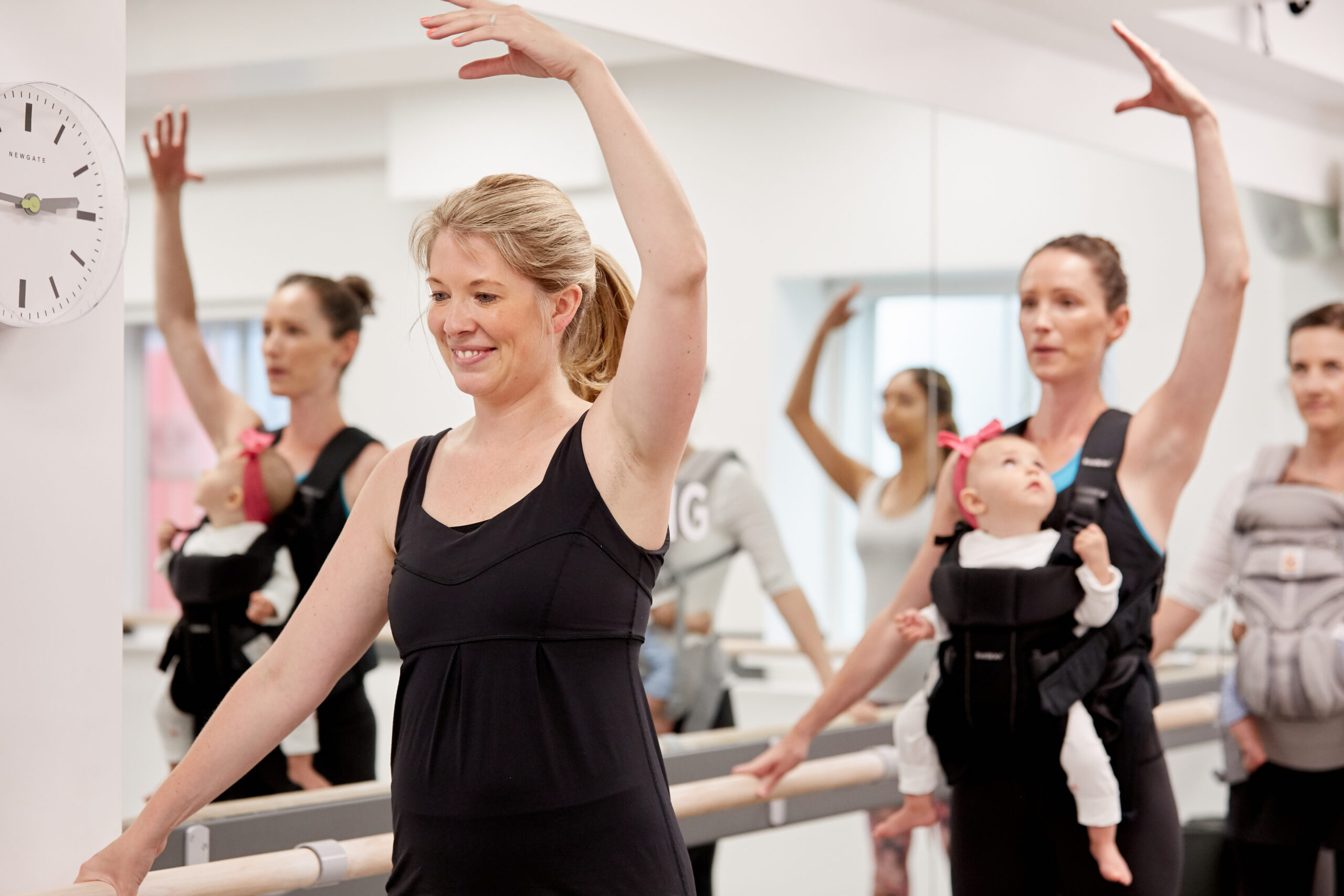
Prenatal: Safe Prenatal Barre Exercises
December 19, 2023
Prenatal Barre Essentials
Pregnancy introduces a myriad of changes, and staying active becomes a crucial aspect of a healthy prenatal journey. In this blog, we explore the world of prenatal Barre exercises, spotlighting key movements like the four-point hover, forearm leg extensions, elbow plank, plies, second position squats, and relevéing (calve raises). We’ll emphasise the significance of avoiding jumping, flexions, and lateral reaches in all Barre exercises for a safe and effective prenatal workout.

The Prenatal Fitness Paradigm
Exercise during pregnancy is not just about maintaining fitness but also about cultivating strength, flexibility, and mindfulness tailored to the changing needs of the body. Prenatal Barre, with its fusion of ballet-inspired movements and modified exercises, stands as an ideal choice for expectant mothers.
Safety First: The Guiding Principle
Before delving into specific exercises, it’s crucial to establish a foundation of safety. All prenatal Barre movements prioritise the safety of both mother and baby, avoiding high-impact actions and focusing on controlled, intentional exercises.
Key Prenatal Barre Exercises
Four Point Hover
Designed to engage the core without straining the abdomen, the four-point hover is a fundamental prenatal Barre exercise that develops proper breathwork and pelvic floor engagement. By maintaining a neutral spine and avoiding overarching, this movement builds strength in the core, arms, and shoulders, promoting stability during pregnancy.
Forearm Leg Extensions
Targeting the posterior chain, this exercise focuses on the glutes and hamstrings. Executed with a neutral spine and controlled leg movements, it aids in lower body strength and stability, essential for the physical demands of pregnancy.
Elbow Plank
A classic for core strengthening, the elbow plank is adapted for prenatal fitness. By avoiding excessive flexion and ensuring proper alignment, this exercise targets the core muscles, offering a stable foundation for the changes associated with pregnancy.
Modified Barre Movements
Pliés with Heels Slightly Apart
Traditional plies are adapted for pregnancy by keeping the heels slightly apart. This modification maintains a safe range of motion for the hips and knees while still effectively engaging the lower body muscles.
Second Position Squats
A staple in Barre workouts, second position squats are modified for prenatal safety. By emphasising controlled movements and avoiding deep flexions, these squats work the thighs and glutes without compromising stability.
Relevé’s (Calve Raises) with Heels Slightly Apart
Calve raises, or relevé’s, are incorporated with heels slightly apart to ensure balance and stability. This modification prevents strain on the calf muscles and supports proper alignment, offering a controlled approach to strengthening the lower legs.
Avoiding Jumping, Flexions, and Lateral Reaches
The Importance of Omission
In prenatal Barre, omitting jumping, flexions, and lateral reaches is crucial. Jumping poses a risk of impact on joints, flexions may strain the abdominal region, and lateral reaches can compromise balance and abdominal stretches. Omitting these movements prioritises safety while still delivering a comprehensive and effective workout.
Mindful Movement for Prenatal Well-Being
The emphasis on omitting certain movements underscores the importance of mindful exercise during pregnancy. Prenatal Barre encourages intentional, controlled movements that nurture the body without subjecting it to unnecessary stress.
Navigating prenatal fitness through Barre exercises offers a safe and effective way for expectant mothers to stay active. By incorporating movements like the four-point hover, forearm leg extensions, elbow plank, plies, second position squats, and relevéing, while mindful of avoiding jumping, flexions, and lateral reaches, moms-to-be can nurture their bodies and promote overall well-being throughout pregnancy. Always consult with healthcare professionals before starting any prenatal exercise program to ensure it aligns with individual health needs. Here’s to a pregnancy journey filled with strength, balance, and the joy of movement.
Leave a Reply Cancel reply
Copyright © 2022 CatieMiller.Co Ltd (Company registered in England and Wales with Company Number: 14299972. Trading as Barre Series.
Legal bits
Back to the top
CONTACT
why barre?
Info
FAQS
THE EDIT
Quick links
ONLINE CLASSES
STUDIO CLASSES
Classes
Connect with us on socials
SIgn UP TO THE barre series newsletter
Site made by Rove